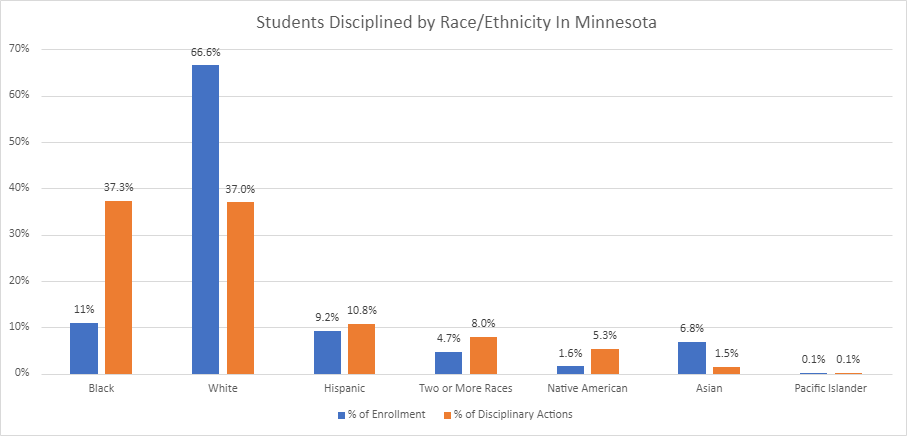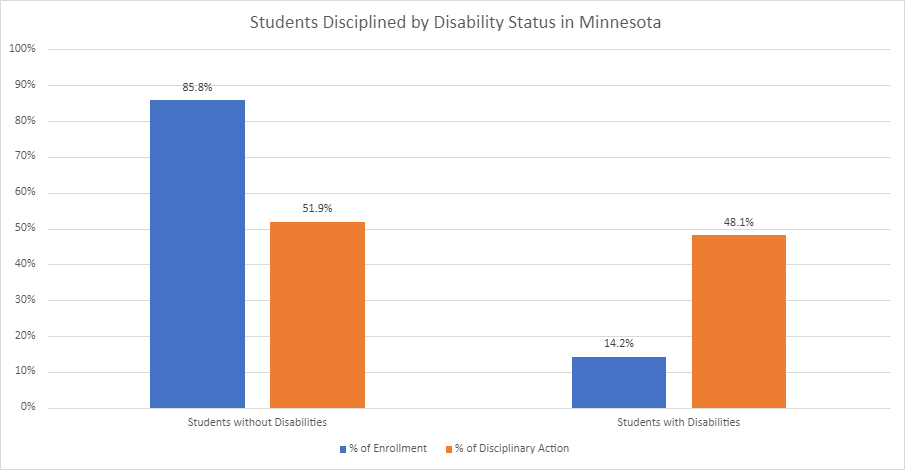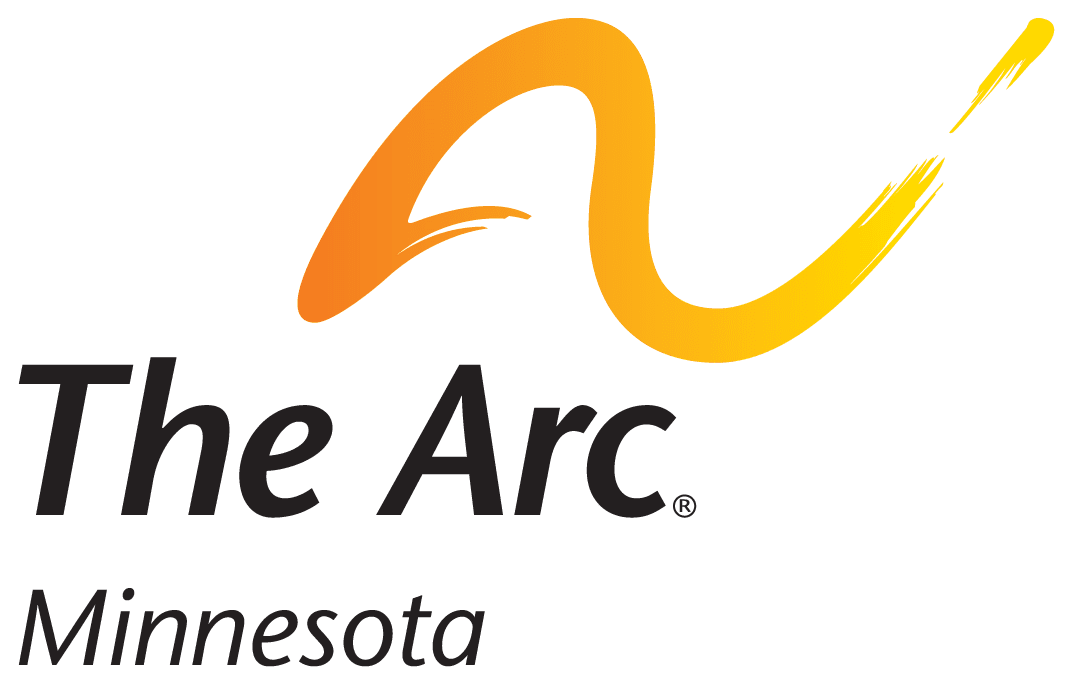Summary
We believe that all children and youth with intellectual and developmental disabilities (IDD) must receive a free and appropriate public education that includes:
- fair evaluation
- ambitious goals that support students’ personal and academic growth
- the right to progress
- individualized supports and services
- high-quality instruction
- access to general education classrooms and school-based programming in age-appropriate, inclusive settings
- environments where students are free from abuse, bullying, and ableist practices
School systems must adopt inclusive, restorative practices that build on students’ strengths with the goal of supporting their individualized success and fostering belonging in community.
Students who have IDD face many barriers in their education. Many students with IDD remain segregated in self-contained classrooms or separate schools. This provides few or no opportunities for academic achievement or social engagement in inclusive settings.
Some school systems’ constant reliance on exclusionary practices and punishment fosters punitive, ableist, and racist environments that fail students who have disabilities – especially those who are Black, Indigenous, and People of Color.
We must end exclusionary practices and punishment that perpetuate racism and ableism in school systems. The strength, skills, wisdom, and capacity of students who have disabilities must be honored, and they must be welcomed in inclusive classrooms that help them grow in learning along with everyone.
Issue
People who have intellectual and developmental disabilities (IDD) face many barriers in their education. Outdated, inaccurate beliefs about students with IDD lead to:
- low expectations
- segregated classrooms
- harsh, punitive practices
Many students with IDD remain segregated in self-contained classrooms or separate schools. This provides few or no opportunities for academic achievement or social engagement in inclusive settings. Students with IDD frequently do not have:
- personalized goals that help them grow individually and academically
- challenging objectives
- high quality instruction
- individualized transition planning
- related services and supports necessary to engage as full members of their school learning communities
Because of this, many students with IDD are not ready for further education, employment, or life in homes of their own after school.
Many parents, families, and students are excluded from the process of evaluating student’s strengths and limitations. They are not included in developing Individualized Education Programs (IEPs).
Many schools have policies and practices that push youth with IDD out of school and into the juvenile justice system (known as the “school to prison pipeline”). Some school systems’ constant reliance on punishment fosters punitive, ableist, and racist environments that fail students who have disabilities–especially those who are Black, Indigenous, and People of Color.
Some school punishment practices of concern include:
- suspension
- expulsion
- physical restraint
- isolation
- medical restraint
- involvement in family regulation system
- withholding recess, play opportunities, and in-school breaks
- criminalization of disability, blackness, gender, and other intersecting identities
The graphics below reflect data from the Minnesota Department of Education’s Disciplinary Incident Reporting System. Data shows that disabled students, as well as those who identify as Black, Indigenous, and other People of Color, are disproportionately impacted by disciplinary practices.


Exclusionary practices and punishment in schools leads to long-term harm. This continues the cycle of trauma many disabled students experience – especially BIPOC students.
Administrators, educators, and support staff too often lack sufficient training and knowledge about the legal rights, learning needs, and abilities of these students. School districts struggle to identify, recruit, and retain qualified special education personnel. Paraprofessionals providing support in inclusive classrooms are often poorly paid and do not always receive or seek professional development relevant to students’ learning needs.
In some communities, an unexamined focus on student performance has led to a false conclusion that students with IDD:
- lower overall test scores
- to blame when schools and school systems do not achieve adequate progress and
- take away from resources for students who do not have disabilities
These harmful perceptions lead to negative stereotypes about students with disabilities. Because of these stereotypes, some people advocate to put students with disabilities in separate schools, rather than include them in schools alongside classmates without disabilities.
Position
We believe that all children and youth with IDD must receive a free and appropriate public education that includes:
- fair evaluation
- ambitious goals that support students’ personal and academic growth
- the right to progress
- individualized supports and services
- high-quality instruction
- access to general education classrooms and school-based programming in age-appropriate, inclusive settings
- environments where students are free from abuse, bullying, and ableist practices
School systems must adopt inclusive, restorative practices that build on students’ strengths with the goal of supporting their individualized success and fostering belonging in community.
The strength, skills, wisdom, and capacity of students who have disabilities must be honored, and they must be welcomed in inclusive classrooms that help them grow in learning along with everyone.
In order to do this, we must end exclusionary practices and punishment that perpetuate racism and ableism in school systems. Our current framework needs to shift from a focus on punishment, to supporting students in individualized ways. The emphasis should be on helping students build tools to deal with overwhelming emotions before they occur, rather than punishing them after they have lost control.
As Minnesota schools work to end exclusionary practices and punishment, the following methods should be used:
- promote non-exclusionary alternatives
- ban physical and chemical restraints by school staff or contracted staff, including school resource officers
- ban all restrictive and deprivation procedures
- maintain the prohibition on suspensions and limitations on expulsions for students in Preschool through Kindergarten
- prohibit suspensions and limit expulsions for students in Kindergarten through 3rd grade
- for all other students, prohibit student removal unless related to willful, violent activity that endangers the student, other students, and/or school staff
- require non-exclusionary disciplinary practices to be used prior to dismissal, except where there is an immediate threat of violence
- require immediate notice to parents about suspensions and expulsions, including non- exclusionary practices that were used before removal
- ensure students who are suspended have the academic support and opportunity to make up their work, require alternative learning services for students who are suspended for 5 or more days, and ensure students receive full credit for their work while suspended
- enhance re-admission plans to include what support systems can help students build skills and avoid future instances that resulted in dismissal or punishment
- define in-school suspension as missing a half day or more of in class instruction
- require that pupil withdrawal agreements be reported to the Minnesota Department of Education
- require districts to outline a procedure for public input on discipline issues
- define a framework for anti-racist Multi-Tiered Systems of Support (MTSS)
- add racial disparities data to information to be reviewed by restrictive procedure oversight committees
Federal and state education guidance should focus on proactive strategies to prevent and end use of exclusionary practices and punishment. This should include guidance that:
- educates schools about implicit bias against racial differences and disability
- promotes de-escalation strategies
- uses principles of universal design in physical and sensory accessibility, learning, and differentiation
- teaches staff about sensory regulation and strategies to ensure sensory accessibility to support students’ physiological regulation and avoid “behavior” that may result in exclusionary disciplinary practices
- teaches staff about communication differences
- teaches staff about collaborative problem solving
- teaches staff about natural student-to-student peer supports
We believe the most promising practices are those that help school staff identify their own biases towards students of color and students with disabilities. There are a number of evidence-based tools that can help reduce the use of exclusionary practices and punishment, which help build connection and skills. These include:
- collaborative problem solving
- understanding sensory processing differences
- understanding alternative means of communication
- de-escalation strategies
- implicit bias training for teachers and staff, especially concerning implicit bias against race or disability
Training for teaching professionals must include:
- dual licensure so all teachers can support students with disabilities in inclusive classrooms
- co-teaching, team teaching, wrap around services and collaboration
- trauma-informed practices
- anti-ableism and disability studies, framed in disability justice, that honor intersectional lived experience
- cultural respect and responsiveness
- social-emotional learning
We encourage schools to engage in conversation with adults who have disabilities about long-term effects of exclusionary practices and punishment
It is critical to assess school structures on a systemic level, and identify the root of disparities that follow students who have disabilities – especially those who are Black, Indigenous, and People of Color – into adulthood.
Approved by The Arc Minnesota Public Policy Committee on November 29, 2021.
